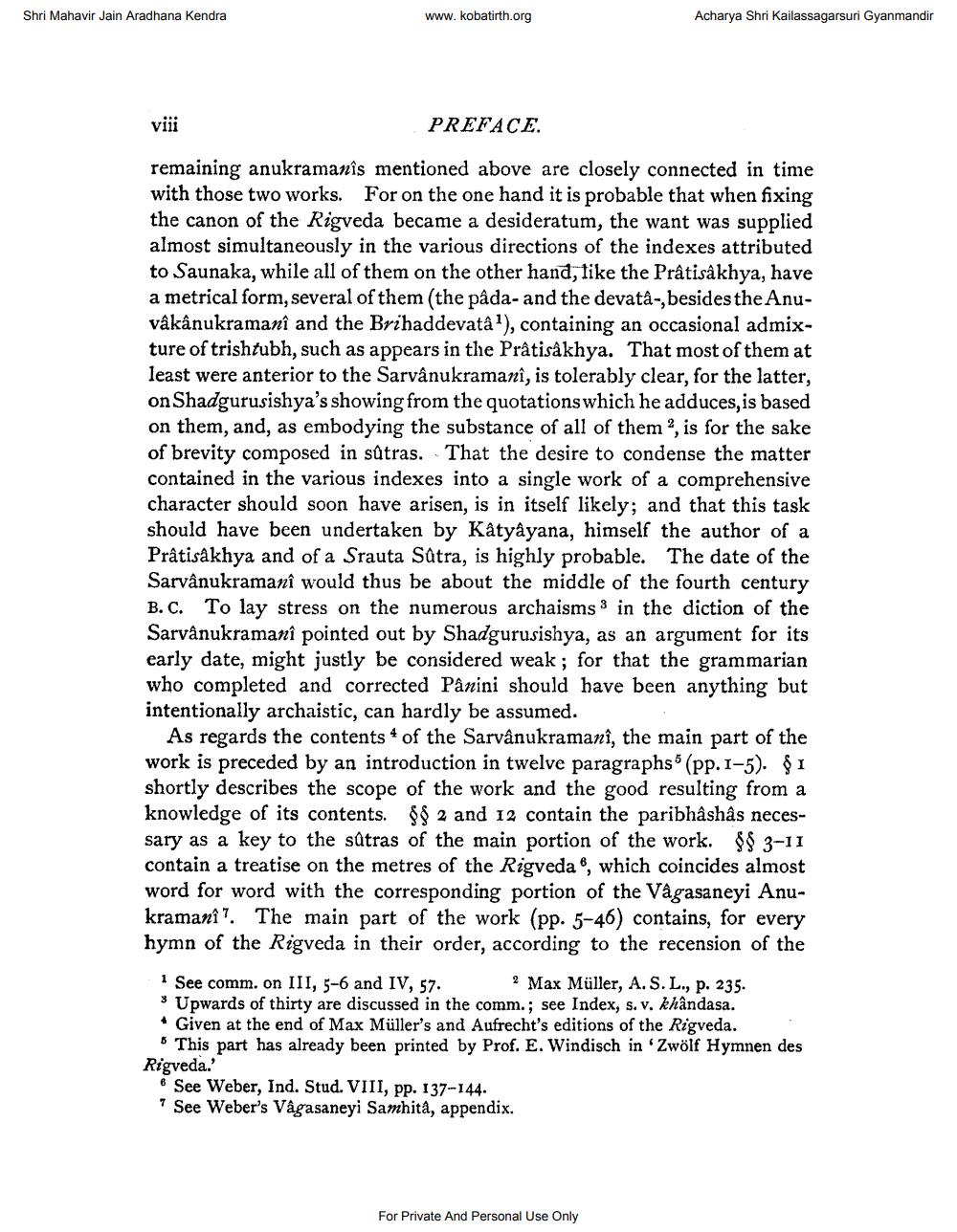________________
Shri Mahavir Jain Aradhana Kendra
viii
www.kobatirth.org
PREFACE.
remaining anukramanîs mentioned above are closely connected in time with those two works. For on the one hand it is probable that when fixing the canon of the Rigveda became a desideratum, the want was supplied almost simultaneously in the various directions of the indexes attributed to Saunaka, while all of them on the other hand, like the Prâtisâkhya, have a metrical form, several of them (the pâda- and the devatâ-, besides the Anuvákánukramani and the Brihaddevatâ1), containing an occasional admixture of trish/ubh, such as appears in the Prâtisåkhya. That most of them at least were anterior to the Sarvânukramani, is tolerably clear, for the latter, on Shadgurusishya's showing from the quotations which he adduces, is based on them, and, as embodying the substance of all of them, is for the sake of brevity composed in sûtras. That the desire to condense the matter contained in the various indexes into a single work of a comprehensive character should soon have arisen, is in itself likely; and that this task should have been undertaken by Kâtyâyana, himself the author of a Prâtisakhya and of a Srauta Sutra, is highly probable. The date of the Sarvânukramani would thus be about the middle of the fourth century. To lay stress on the numerous archaisms in the diction of the Sarvânukramanî pointed out by Shadgurusishya, as an argument for its early date, might justly be considered weak; for that the grammarian who completed and corrected Panini should have been anything but intentionally archaistic, can hardly be assumed.
B. C.
Acharya Shri Kailassagarsuri Gyanmandir
As regards the contents of the Sarvânukramanî, the main part of the work is preceded by an introduction in twelve paragraphs" (pp. 1-5). §1 shortly describes the scope of the work and the good resulting from a knowledge of its contents. §§ 2 and 12 contain the paribhashâs necessary as a key to the sûtras of the main portion of the work. $$ 3-11 contain a treatise on the metres of the Rigveda, which coincides almost word for word with the corresponding portion of the Vagasaneyi Anukramant. The main part of the work (pp. 5-46) contains, for every hymn of the Rigveda in their order, according to the recension of the
1 See comm. on III, 5-6 and IV, 57. 2 Max Müller, A. S. L., p. 235. * Upwards of thirty are discussed in the comm.; see Index, s. v. khândasa.
⚫ Given at the end of Max Müller's and Aufrecht's editions of the Rigveda. "This part has already been printed by Prof. E. Windisch in 'Zwölf Hymnen des Rigveda.'
See Weber, Ind. Stud. VIII, pp. 137-144. See Weber's Vagasaneyi Samhita, appendix.
For Private And Personal Use Only




